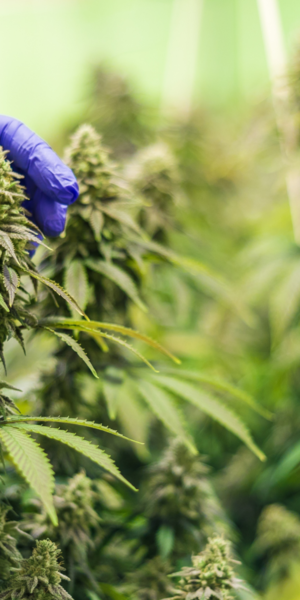Analysis: The Quiet Revolution in U.S. Cannabis: Efficiency Is the New Growth Engine
LOS ANGELES — The U.S. Cannabis industry is evolving—but not in the way headlines suggest.
Yes, national retail sales remain strong at a $32 billion annualized pace. And yes, states like New York and Ohio are posting impressive gains following adult-use rollouts.
But the real story—the one determining which operators thrive and which fade away—is happening behind the scenes.
At Highly Capitalized Network, we’ve reviewed the latest insights from LeafLink’s Summer 2025 Cannabis Industry Report, and one truth stands out: the next generation of industry winners will be defined not by scale, hype, or headcount—but by operational efficiency.
We asked Ben Burstein, Senior Corporate Development Manager at LeafLink, whether he saw the same shift. His team’s data—and the sharp rise in demand for efficiency tools—confirmed it.

A $10 Billion Inventory Black Hole
Cannabis retailers are unknowingly sitting on a silent killer: excess inventory. Today, the average dispensary carries more than 100 days’ worth of product—over triple the inventory norms in adjacent industries like tobacco or convenience retail.
This glut ties up more than $7 billion in working capital and floods the market with excess supply, triggering widespread markdowns. The result? Roughly $4 billion lost annually to price reductions and another $2 billion in missed sales due to out-of-stocks—when consumers can’t find their favorite SKUs.
That’s a $10 billion drag on the industry’s bottom line—more than the estimated cost of 280E taxation or the potential benefits from federal rescheduling.

“Operators can take steps to address this $10 billion inventory problem by adopting real-time sell-through data, automated reordering, and data-driven assortment strategies,” said Ben Burstein, Senior Corporate Development Manager at LeafLink. He went on to say:
“It’s all about finding efficiencies in ongoing operations—and those operators that find them are seeing clear returns: stronger margins, faster cash conversion, and more consistent customer loyalty.”
The Good News: Efficiency Pays
Forward-thinking operators are already investing in smart solutions:
– Sell-through tracking to monitor velocity and eliminate dead stock
– Auto-reordering for top SKUs to keep shelves full without overstocking
– Predictive assortment tools to optimize category mix
– Inventory financing to free up cash flow
Retailers using these tools aren’t just staying afloat—they’re outperforming peers on margin, customer retention, and operational stability.
Companies like Headquarters (headquarters.co) are helping drive efficiency across the entire Cannabis ecosystem. Their all-in-one business-management service combines accounting, HR, compliance, and financial operations into a centralized system—purpose-built for Cannabis operators.
By replacing spreadsheets and disjointed systems with integrated dashboards and consistent reporting, the Headquarters team is allowing companies to save time, sell more, and make faster, better decisions.
“The average cannabis operator is juggling multiple disconnected systems and drowning in manual workflows,” said David Peck, CEO of Headquarters.
“We built our service so that CFOs, HR leads, and founders can see what’s really happening across finance, compliance, and workforce in real time—and take action before problems escalate. Efficiency is no longer a luxury; it’s the difference between survival and success.”
That same perspective is echoed by LeafLink’s Ben Burstein, who sees the same pattern emerging across the platform’s vast retail and wholesale network.
“The U.S. cannabis industry is entering a new chapter—one defined not by headline-grabbing sales spikes, but by foundational progress,” added Burstein.
“What’s clear is this: scale alone is no longer a sufficient advantage. In today’s environment, operators who move quickly to optimize margins, unlock working capital, and build loyalty through operational consistency are the ones gaining ground.”

Market Highlights: Where Growth Is Happening
While mature markets like California and Michigan are stabilizing, newer adult-use states are injecting fresh momentum into the national picture:
– New York: +$842 million in annualized sales
– Ohio: +$565 million, with sales per dispensary already exceeding $5.8 million
– New Jersey: Steady, moderate expansion
Meanwhile, Maryland and Nevada continue to lead in sales per dispensary, buoyed by limited license models and strong consumer demand.
On a per capita basis, Michigan, Nevada, and New Mexico are significantly outperforming the national average—while New York and Ohio are rapidly climbing the leaderboard.
Product Trends: Flower Still Dominates—But Others Are Rising
Despite surging innovation across categories, flower remains dominant, comprising 39 percent of wholesale sales. Still, other formats are gaining traction:
– Cartridges: 21 percent
– Edibles: 14 percent
– Pre-rolls: 14 percent

Notably, pre-roll demand spiked by 7 percent leading into 4/20, reminding us that seasonality and rituals still heavily influence product dynamics.
The Road Ahead: $50 Billion by 2030?
LeafLink projects national Cannabis sales will reach $52.7 billion by 2030, driven by a consistent 9 percent compound annual growth rate and continued market expansion in high-population, underpenetrated states.
But that growth won’t be automatic. We asked Ben Burstein who he believes will capture the upside. His answer was simple: the operators who treat efficiency as strategy—not a side project—will win.
The Road Ahead
At Highly Capitalized Network, we believe the next era of Cannabis success won’t be led by the loudest brands or the biggest footprints—but by the smartest operators. Those who embrace inventory science, capital discipline, and operational intelligence will define the future of the U.S. Cannabis market.
Want more strategic insights like this? Follow Highly Capitalized Network on LinkedIn and subscribe to our newsletter at HighlyCapitalized.com to stay ahead of the latest business news in cannabis.



































